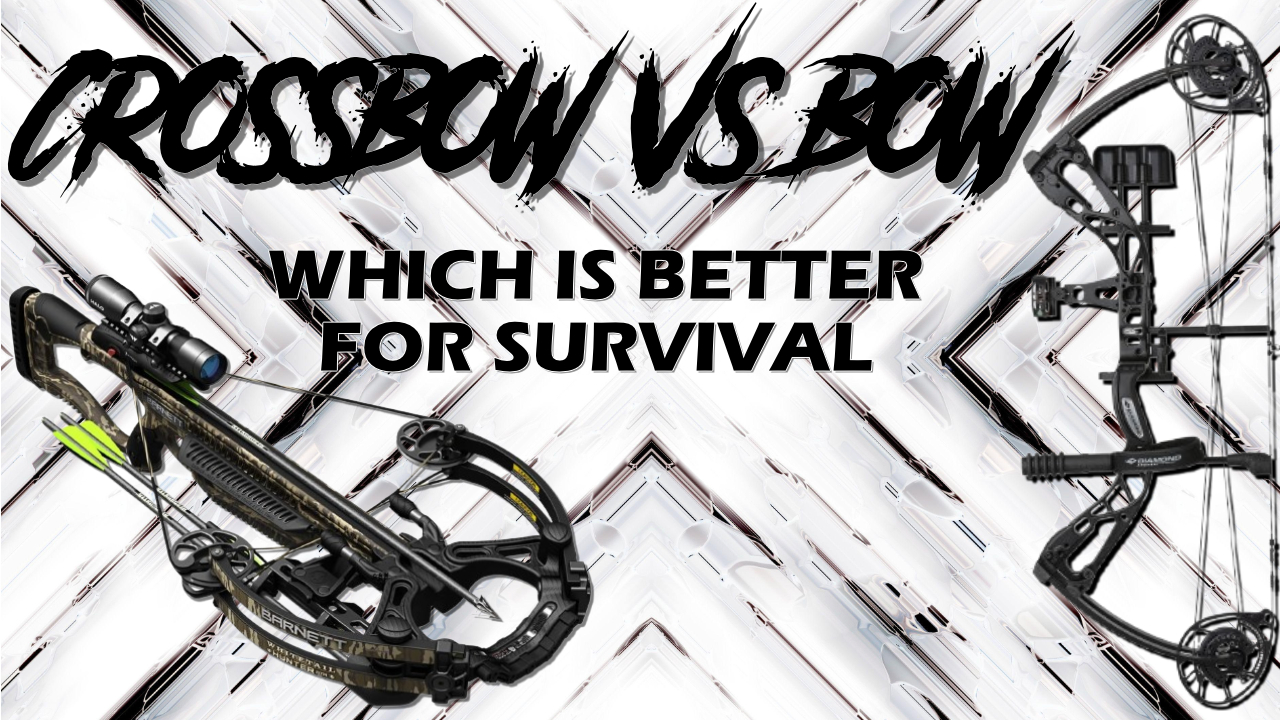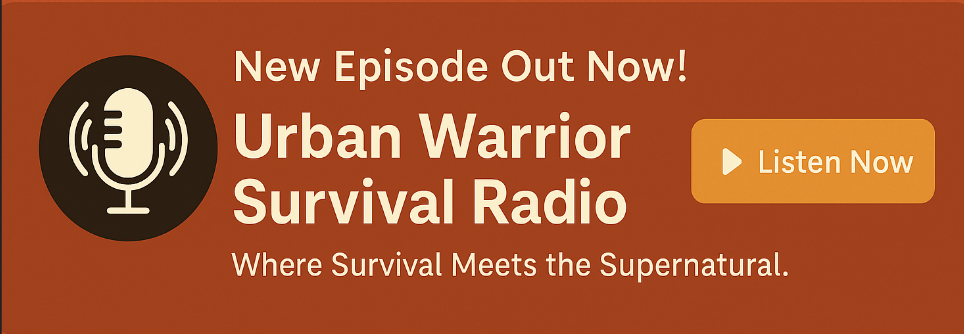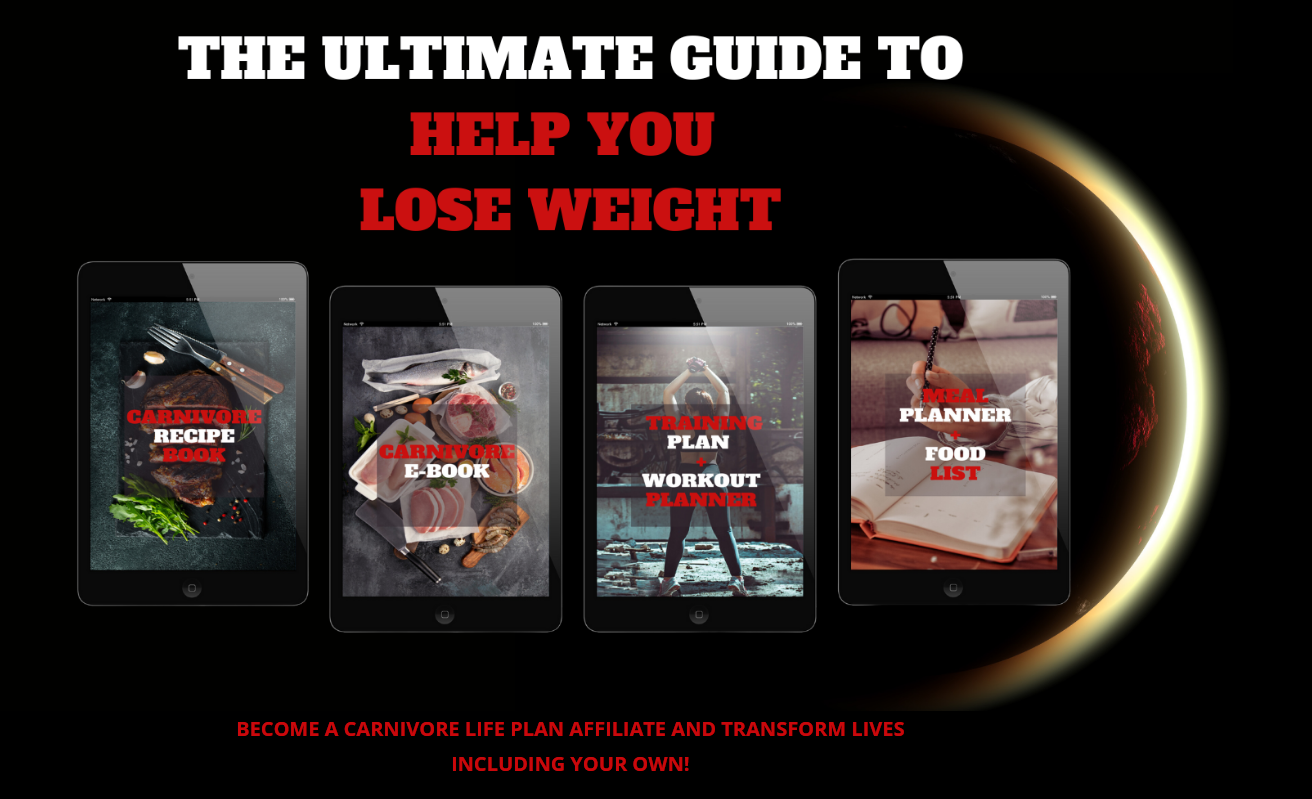

Popular
BOWS VS CROSSBOWS: WHICH IS BETTER FOR SURVIVAL?
Does The Bow or Crossbow Give You A Better Chance For Survival!
1. Portability: Weight, Size, and Stealth in the Wild
When you’re on the move—whether bugging out through the woods or navigating an urban collapse—the size and weight of your gear can decide how far you make it.
Bow Advantage: Traditional recurve or takedown bows are lighter and easier to sling across your back. They don’t require complex parts, and some models break down into 3 pieces, fitting inside a small pack. That means less fatigue over long treks and more mobility when stealth is your only ally.
Crossbow Advantage: Crossbows, especially modern compound models, are heavier and bulkier. You’ll feel it if you’re trekking for miles. However, they can be strapped like a rifle, keeping your hands free. For short-range scouting or defense of a fixed camp, the weight may not matter as much.
Survival Bottom Line: If constant movement and stealth are your survival priorities, the bow wins. If you’re holding ground, the crossbow’s bulk becomes less of a problem.
2. Ease of Use: Skill vs. Simplicity
When you’re fighting to survive, you may not have weeks to master a craft.
Bow Advantage: Archery is an ancient art, but it takes consistent practice. Developing accuracy under stress requires training your muscles, breathing, and form. In return, you gain speed, versatility, and a weapon that feels like an extension of your body.
Crossbow Advantage: With a crossbow, you point and shoot. It’s as close to a firearm as a primitive weapon gets. You don’t need years of practice to be effective. Once sighted in, even a beginner can hit targets with surprising accuracy.
Survival Bottom Line: If you don’t have time to train and just need raw usability, the crossbow wins. If you’re willing to train long-term for mastery, the bow pays off with speed and adaptability.
3. Reload Speed: One Shot or Many?
In a survival fight, getting a second shot off can mean life or death.
Bow Advantage: An experienced archer can fire multiple arrows in under a minute. With practice, some can launch 2–3 arrows in 10 seconds, creating a near-constant stream of shots. This makes a bow superior when facing multiple threats.
Crossbow Advantage: Even with a cocking device, reloading a crossbow is slow. You may get one accurate, high-powered shot—but after that, you’re vulnerable. Against multiple attackers, this delay can be fatal.
Survival Bottom Line: The bow dominates in reload speed. Crossbows are ambush or “first strike” weapons, not sustained combat tools.
4. Power and Penetration: Dropping Game or Stopping Threats
The raw stopping power of your weapon determines whether your shot puts down a deer—or just wounds it and forces you to chase.
Bow Advantage: Traditional bows have enough power to take down medium game and even larger animals with the right draw weight. Penetration relies on skill and angle. Against human threats, a strong bow can be lethal—but placement matters.
Crossbow Advantage: The crossbow is the powerhouse. With higher draw weights (often 150–200 pounds) and shorter, heavier bolts, they deliver devastating penetration. A well-placed shot can pierce modern hunting armor or thick clothing.
Survival Bottom Line: For sheer power and “stopping” ability, the crossbow takes the win. It’s more reliable for one-shot kills on both animals and hostile humans.
5. Ammo: Arrows vs. Bolts in a Long-Term Crisis
What good is your weapon if you run out of ammunition?
Bow Advantage: Arrows are easier to craft with primitive materials. A straight shaft, feathers, and a sharpened tip can become serviceable ammo with enough skill. They’re longer, so easier to retrieve, and they flex instead of breaking as easily.
Crossbow Advantage: Bolts are shorter and denser, making them harder to improvise. They break more often, and the shorter shaft means less penetration if made poorly. However, they’re easier to carry in bulk because of their compact size.
Survival Bottom Line: In long-term survival where you may need to craft your own ammunition, the bow is the winner. The ability to reproduce arrows from nature gives you independence from factories.
6. Maintenance and Durability: Which Lasts Longer in Harsh Conditions?
If your weapon fails in the field, your survival chances drop with it.
Bow Advantage: Simple design, fewer moving parts, and no cranks or strings under extreme tension mean bows are easier to maintain. A broken string can be replaced with natural cordage in a pinch, and wood or fiberglass bows last for years.
Crossbow Advantage: Crossbows are mechanically complex. They have triggers, rails, and cocking systems that require maintenance. Strings wear out faster due to higher tension, and if a part breaks in the wild, you might not be able to fix it.
Survival Bottom Line: The bow is the rugged survivor here. Less complexity equals fewer failures. Crossbows are more like machines, and machines break.
7. Psychological Edge: Fear, Noise, and Intimidation
Survival isn’t only about physical power—sometimes psychology wins battles.
Bow Advantage: Silent, fast, and repeatable. The sound of arrows slicing through the air is barely detectable, giving you stealth. In combat, multiple arrows flying at an enemy can cause panic, forcing them to retreat rather than advance.
Crossbow Advantage: The sheer sight of a crossbow, aimed and cocked like a rifle, carries intimidation. The sound of a bolt slamming into a target is brutal and fear-inducing. Against enemies, one well-placed shot can stop aggression immediately.
Survival Bottom Line: For stealth and psychological pressure in group scenarios, the bow wins. For intimidation in one-on-one encounters, the crossbow might give you the edge.
Final Verdict: Which Should You Carry—Bow or Crossbow?
If you’re forced to pick only one:
Choose the Bow if you plan to stay mobile, train for skill, and survive long-term without depending on modern supply chains. It’s lighter, faster, easier to maintain, and you can keep yourself armed with crafted arrows.
Choose the Crossbow if you need raw power, intimidation, and immediate usability without years of training. It’s a strong defensive weapon but slower and more fragile in the long haul.
Survival Rule of Thumb: A bow is the survivor’s choice, a crossbow is the settler’s choice.
In the end, the weapon you master is the weapon that saves your life.
VIEW THIS ARTICLE ON YOUTUBE
FOLLOW ON SPOTIFY
ADVERTISEMENT
ADVERTISEMENT
ADVERTISEMENT
ADVERTISEMENT
VISIT ME ON TWITCH!
RELATED POST
Social Networks
- B.Roc Survival Podcast
- Discord
- Patreon
- Youtube
Links List
B.Roc Survival Inc.
All rights reserved












